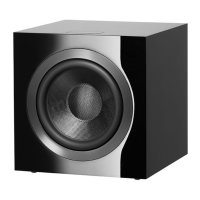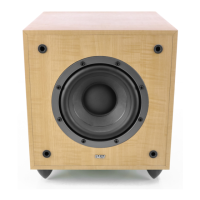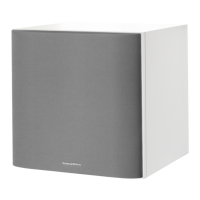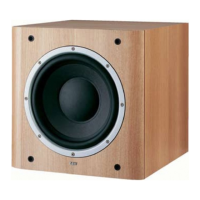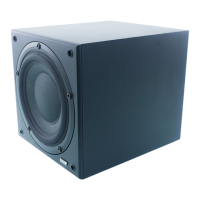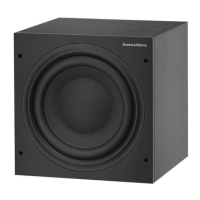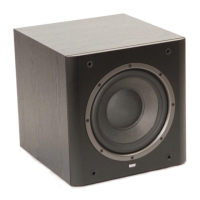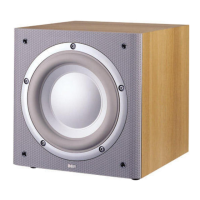A secondary consequence of the use of twin opposing
drivers is the inherently balanced kinetic nature of the
device. It is well known that the reproduction of bass
with correct dynamics requires a firm, solid foundation –
sometimes referred to as a mechanical ground. It is the
reason that speakers stand on spikes. A practical
downside is that some vibrational energy is transmitted
to the floor, with the potential of radiating sound into a
room below the listening room. This can be a particular
problem in apartments. With the PV1, there is no rocking
motion generated and the device is inherently stable.
The subwoofer therefore rests on a circular rubber base
that mechanically isolates it from the floor, yet it retains
an effective foundation.
A simple, yet effective demonstration of the inertness of
the enclosure is to touch it while the subwoofer is playing
loudly. There is virtually no discernable movement.
PV1 – Technical information
The listening experience reveals a subwoofer with
incredible transient response and pitch definition.
However, the enclosure design is not the only reason for
this. The driver diaphragms themselves also have to be
stiff enough to resist any tendency to deform when
subjected to the pressures generated inside the
enclosure and the forces from the voice coil. A very rigid
sandwich construction is therefore employed, with a
concave aluminium outer layer, a mica cone at the back
and an expanded polystyrene core.
Any compact subwoofer will require substantial
equalisation in order to have an extended low-frequency
response and this implies a high-power amplifier. The
PV1 utilises a 500W ICEpower® module, which
allows considerable output levels to be generated
without audible distortion. The aluminium enclosure acts
as the heat sink.
PV1 section
Naturally, the driver must be capable of handling this
power. The large magnet structure aids control of the
motion of the diaphragm and forms an effective heat
sink for the voice coil, which, at 30mm long, allows
sufficient linear movement. A double rear suspension
ensures that the coil remains in line throughout the large
excursion.
